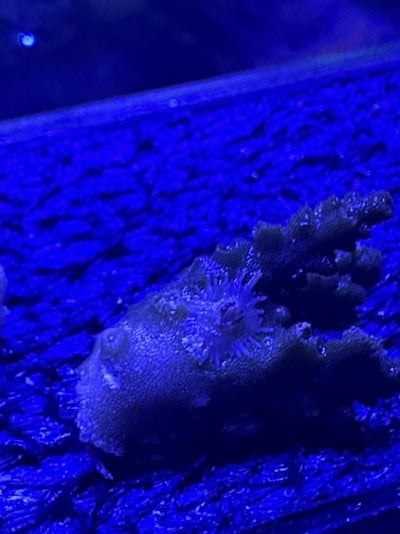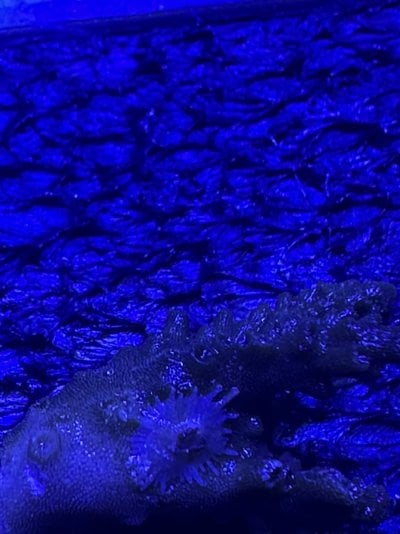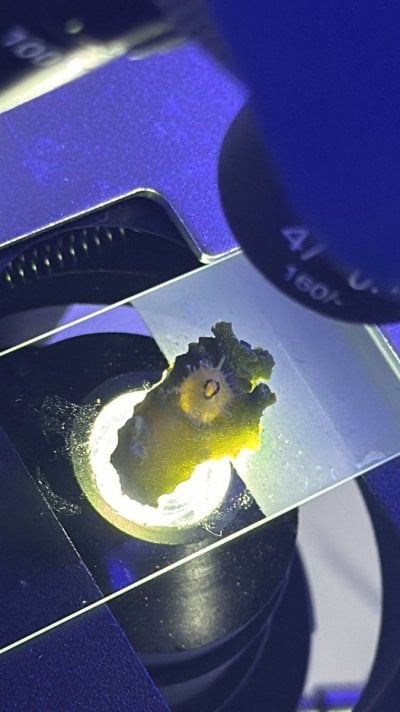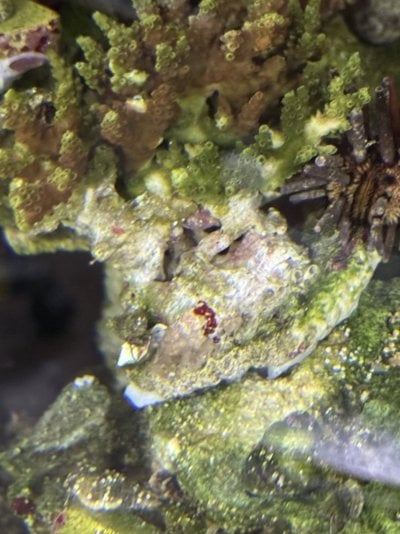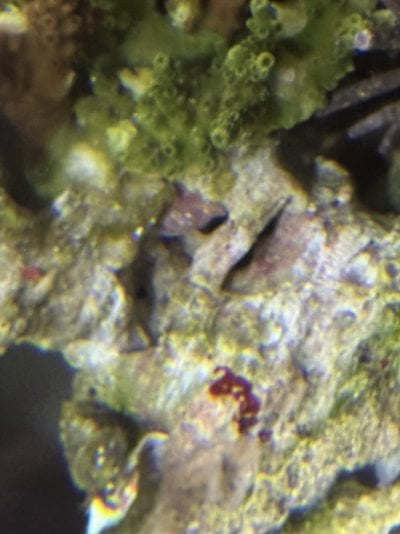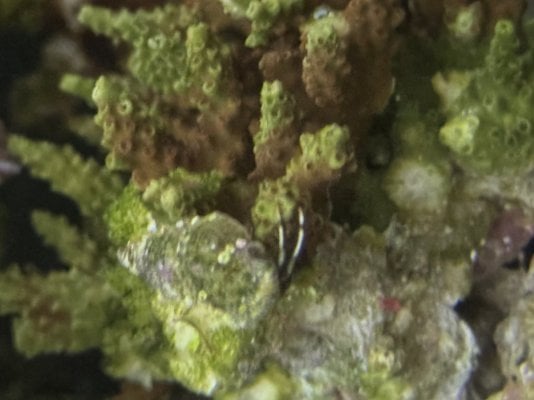Navigation
Install the app
How to install the app on iOS
Follow along with the video below to see how to install our site as a web app on your home screen.
Note: This feature may not be available in some browsers.
More options
You are using an out of date browser. It may not display this or other websites correctly.
You should upgrade or use an alternative browser.
You should upgrade or use an alternative browser.
SPS dying - white bug(?)
- Thread starter andrespgc
- Start date
-
- Tags
- dying sps acropora
- Tagged users None
Not a frag.. It is a colony.. I had to cut the dead branches and found this guy there.. It might be a coincidence but i found those on almost all dead branches..Do you have any other sps or is this the only frag?
@ISpeakForTheSeas? Looks like some sort of nem or NPS coral
vetteguy53081
Well known Member and monster tank lover
View Badges
Partner Member 2024
Excellence Award
Reef Tank 365
RGB
Article Contributor
Tampa Bay Reef Keepers
West Palm Beach Reefer
Hospitality Award
Ocala Reef Club Member
305 Reef Club
Wisco Reefers
Midwest Reefer
Fish Medic
MAC of SW Florida
Rock Pool Reef Keepers
R2R Secret Santa 2023
My Tank Thread
My Aquarium Showcase
Appears to be tunicate sponge but need clearer pics under white lighting
That's a coral-boring barnacle - they're usually harmless (causing mild deformities, but no real damage to corals), but if the coral they're growing in is small enough and the barnacle big enough, it can cause issues.@ISpeakForTheSeas? Looks like some sort of nem or NPS coral
Oh yeah, I see it. The white protrusions threw me offThat's a coral-boring barnacle - they're usually harmless (causing mild deformities, but no real damage to corals), but if the coral they're growing in is small enough and the barnacle big enough, it can cause issues.
I see these a lot on maricultured pieces of sps.. seems to be a tiny fan that comes out every so often but retracts super fast.That's a coral-boring barnacle - they're usually harmless (causing mild deformities, but no real damage to corals), but if the coral they're growing in is small enough and the barnacle big enough, it can cause issues.
A barnacle wouldn't eat your coral like that, but that pencil urchin visible on the side of the pic might:Sorry to revive an old thread but i do have more to show now.. It’s eating from base up.
And it’s also very fast.
Looks like the pencil urchin Eucidaris tribuloides to me:
For the pencil urchin (the top one is scientific study based, the bottom one is aquarium hobby/industry observations):
Yeah, from what I can find, these guys are technically considered spongivores* (i.e. they prefer to eat sponges), but when they can't get sponges they've been found to eat just about literally anything (one study found that these would even eat the wooden or fiberglass tank walls if starved enough**); so I'd imagine that how reef-safe they are likely depends on how much food they have available that they would prefer over the corals in the tank.
*Source:
Spongivory by Eucidaris tribuloides from Salvador, Bahia (Echinodermata: Echinoidea) | Journal of the Marine Biological Association of the United Kingdom | Cambridge Core
Spongivory by Eucidaris tribuloides from Salvador, Bahia (Echinodermata: Echinoidea) - Volume 82 Issue 2

www.cambridge.org
**Source:
https://www.jstor.org/stable/1539784
Looks to be Eucidaris tribuloides:
"its search for food, which can include sponges, corals, bivalves, gastropods, bryozoans, along with detritus and some algae."*
"It feeds primarily on algae and coral but they can feed on small invertebrates as well. "**
*Source:
Section: Urchins: Group: Common Urchins: Species: Eucidaris tribuloides (Mine Urchin, Slate Urchin, Club Urchin, Pencil Urchin)
Marine Aquarium Library: Common Urchins, Order: Cidaroida - Family Cidaridae, Eucidaris tribuloides
www.saltcorner.com
**Source:

Pencil Urchin - Gulf Specimen Marine Lab
E-1621 PENCIL URCHIN, Eucidaris tribuloides This sluggish, nocturnal sea urchin has thick, wooden like spines. It feeds primarily on algae and coral but they can feed on small invertebrates as well. They are a very hardy species and can range from a light brown to a reddish brown. HABITAT They...

gulfspecimen.org
That said, that coral's looking pretty heavily covered in algae, so I'd guess there are some other issues going on with that too.Edit: From the threads I've seen about damage caused by these guys, it seems they prefer to eat LPS.
Similar threads
- Replies
- 7
- Views
- 286
- Replies
- 4
- Views
- 144
- Replies
- 14
- Views
- 328


